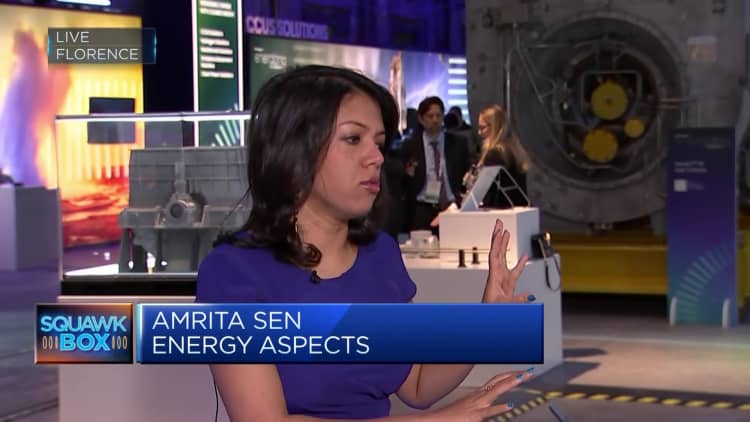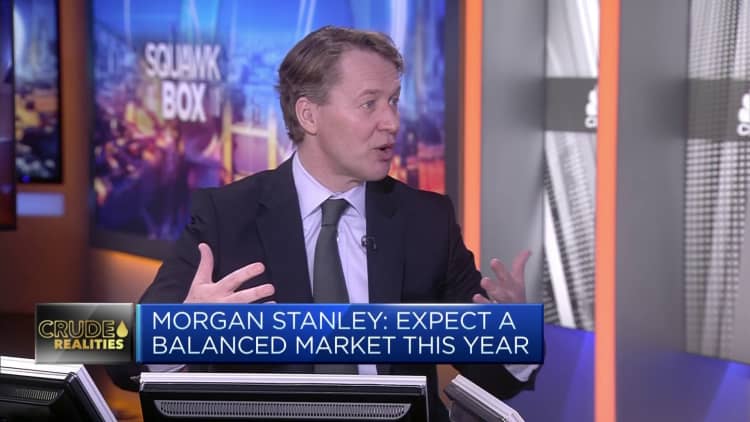- Investors could be caught off guard by the strength of an oil price rally this summer, according to Morgan Stanley’s Martijn Rats.
- His comments came as oil prices rose on Wednesday amid fears of potential supply disruption.
- “Look, we’re not calling for the super cycle, but we could have a bit of strength in the summer,” Rats told CNBC’s “Squawk Box Europe.”
Investors could be caught off guard by the strength of an oil price rally this summer, according to Morgan Stanley‘s Martijn Rats.
His comments came as oil prices rose on Wednesday amid fears of potential supply disruption after Ukrainian drone attacks on Russian refineries, and hopes that the Federal Reserve may soon start cutting interest rates which traditionally boosts demand.
International benchmark Brent crude futures for May delivery traded at $83.23 a barrel at 12:20 p.m. London time, up $1.3 for the session, while U.S. West Texas Intermediate (WTI) futures for April delivery stood at $78.95, roughly $1.37 higher.
Brent futures have largely been trading in a narrow $75 to $85 interval since the start of the year.
“They are quite benign. We’ve had a nice rally [in] December, January and first half of February but the last couple of weeks we’ve been fairly rangebound,” Rats told CNBC’s “Squawk Box Europe” on Wednesday.
“There is a view in the market that the non-OPEC producers can meet all of the demand growth this year and therefore there isn’t much incremental room for OPEC oil and that means you rely on continued OPEC cuts,” Rats said.
“Now, they are doing that, but people think that that dynamic for now puts a little bit of a cap on the price. We’ve had a good amount of spare capacity. I think the summer could be tighter than people expect but this is the dynamic that currently exists.”
Earlier this month, OPEC+ agreed to extend voluntary output reductions until the end of the second quarter in a bid to shore up the short-term stability of crude markets.
OPEC+ refers to a group of some of the world’s largest oil producers, including heavyweights such as Saudi Arabia and Russia.
‘Really elevated prices’
Asked why fuel supplies could be tighter in the summer, Rats said that the oil research community had been “quite cautious” about the outlook at the start of the year. However, a flurry of stronger-than-expected data had convinced many to upwardly revise oil demand forecasts.
“On the supply side, we’re seeing a slowdown in U.S. shale, we’ve seen a wobbly start in Brazil [and] we’ve seen a wobbly start in Canada. We expected inventories to build but year-to-date they are kind of flat. If in the first quarter, inventories [are] flat then they can draw possibly quite significantly during the summer period.”
Rats said there were plenty of indicators, such as physical differentials and refining margins, among others, that indicate the oil market has already tightened a bit more than the current spot price suggests.
“Now, at the moment we are going through oil refinery maintenance so [this] is always a bit of a soft part of the year but I think as the summer driving season unfolds, inventories draw … look, we’re not calling for the super cycle, but we could have a bit of strength in the summer.”
The summer driving season typically refers to the months between the U.S. Memorial Day and Labor Day holidays when people in the Northern Hemisphere tend to hit the roads.

Speaking to CNBC’s Dan Murphy in late January, Amrita Sen of Energy Aspects said geopolitical factors such as the Israel-Hamas war and tensions in the Red Sea could also push oil prices higher this summer.
Reflecting on attacks in the Red Sea, Sen said that naphtha (a hydrocarbon mixture) and jet fuel markets had been significantly impacted.
“This is the weak period for jet demand,” Sen said.
“Summer jet is ahead of us, and we think these attacks are going to go on for months so we could see some really elevated prices into the summer.”











